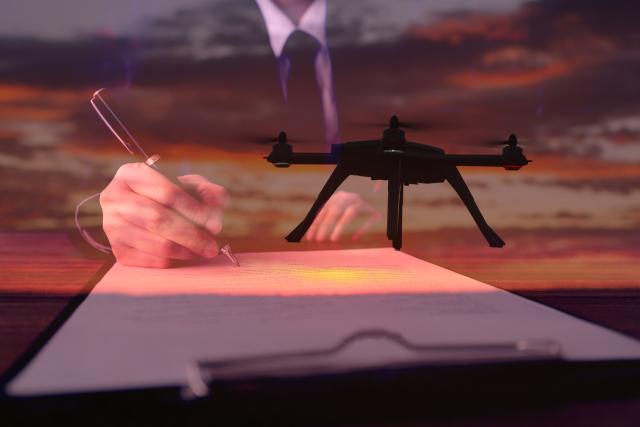
Attitudes towards drone technology have significantly shifted since COVID-19 shut down much of the world.
For many businesses, the pandemic has created a “new normal” resulting in an increased adoption of drones to accomplish essential and emergent tasks. The uptick in demand not only positioned drones as a major player in crisis response but, more importantly, offered a window of opportunity to grow the industry.
“Drones have incredible safety and efficiency benefits. Drones’ ability to help us accomplish essential tasks without endangering people makes it an incredibly valuable tool right now in the COVID-19 era. The potential reality of long-term social distancing will make drones a game changer,” Lisa Ellman, executive chair at the Commercial Drone Alliance, said during a webinar hosted by Commercial UAV in April.
Expanding across multiple industries, drones have helped deliver food and medication, disinfect areas, enforce curfews and enable contact-free work. In oil and gas, there has been an increased application of drones for pipeline monitoring, inspection, surveying and aerial photography. Additionally, minimal environmental impact and hefty investment by venture capital firms into the UAV space has sweetened the growth of the market.
In May, the Railroad Commission of Texas (RRC) launched a statewide drone inspection team. The flight mission detected a leak at an oil well in Reeves County in the Permian Basin. The drones, equipped with thermal cameras, allowed the RRC pilots to collect images and alert the operator. The technology successfully provided an alternative to in-person inspections and helped maintain the safety of workers.
For this project, 19 agency inspectors received remote pilot certification from the Federal Aviation Administration (FAA). This is a notable achievement considering drones still face big regulatory hurdles that often cap the reach of the technology.
Recently, the FAA proposed a rule that every unmanned aircraft system have remote ID technology built into drones heavier than half a pound. The FAA said the remote ID provides an extra layer of safety by showing the drone’s location and ownership information to people on the ground, but this add-on would add an enormous cost on a low-risk aircraft for pilots.
“Some limited operations are doable under existing regulations,” Ellman said. “But, many meaningful operations require waivers, exemptions or other FAA approvals.”
The crisis has put pressure on the FAA to prioritize and fast track waivers, exemptions and other approvals that are geared toward responding to the COVID-19 pandemic. These changes could have a long-term bearing that moves the policy framework toward enabling all useful drone activity, Ellman said.
In an unprecedented move in April, the FAA issued a Part 107 waiver for drone inspection services during COVID-19, according to the Financial Times. The waiver granted an unnamed oil and gas company permission to operate drones beyond visual line of site (BVLOS) while workers’ access was limited as a result of COVID-19. The waiver was issued within 24 hours of submission and extends to June 30 or “or the expiration of the federal, state, or local COVID-19 recommendations or requirements.”
Ian Smith, CEO of Ware, said during the webinar that it imperative to keep touting the benefits of the autonomous robots along the journey.
Brandon Torres Declet, CEO and co-founder of Measure, argued that the lockdown is an opportunity for companies to prove that drones are a reliable and safe resource that can be used at scale. He said these efforts, paired with advocacy groups, will drive the value of drones both now and after the COVID period.
It remains to be seen if the FAA will continue to give one-off waivers or if the pandemic has led to a speedy approval process. Ellman is actively working towards accomplishing the latter.
“I think the use case and value composition of drones is clearer now than ever,” Ellman said. “Getting them to focus on the benefits of drone technology in the short term obviously enables these use cases, but in the long term it shows that we can use drones safely and securely in a way that will move all this forward.”
Recommended Reading
ONEOK CEO: ‘Huge Competitive Advantage’ to Upping Permian NGL Capacity
2024-03-27 - ONEOK is getting deeper into refined products and adding new crude pipelines through an $18.8 billion acquisition of Magellan Midstream. But the Tulsa company aims to capitalize on NGL output growth with expansion projects in the Permian and Rockies.
SCF Acquires Flowchem, Val-Tex and Sealweld
2024-03-04 - Flowchem, Val-Tex and Sealweld were formerly part of Entegris Inc.
Enbridge Closes First Utility Transaction with Dominion for $6.6B
2024-03-07 - Enbridge’s purchase of The East Ohio Gas Co. from Dominion is part of $14 billion in M&A the companies announced in September.
Pembina Cleared to Buy Enbridge's Pipeline, NGL JV Interests for $2.2B
2024-03-19 - Pembina Pipeline received a no-action letter from the Canadian Competition Bureau, meaning that the government will not challenge the company’s acquisition of Enbridge’s interest in a joint venture with the Alliance Pipeline and Aux Sable NGL fractionation facilities.
EQT Deal to ‘Vertically Integrate’ Equitrans Faces Steep Challenges
2024-03-11 - EQT Corp. plans to acquire Equitrans Midstream with $5.5 billion equity, but will assume debt of $7.6 billion or more in the process, while likely facing intense regulatory scrutiny.





